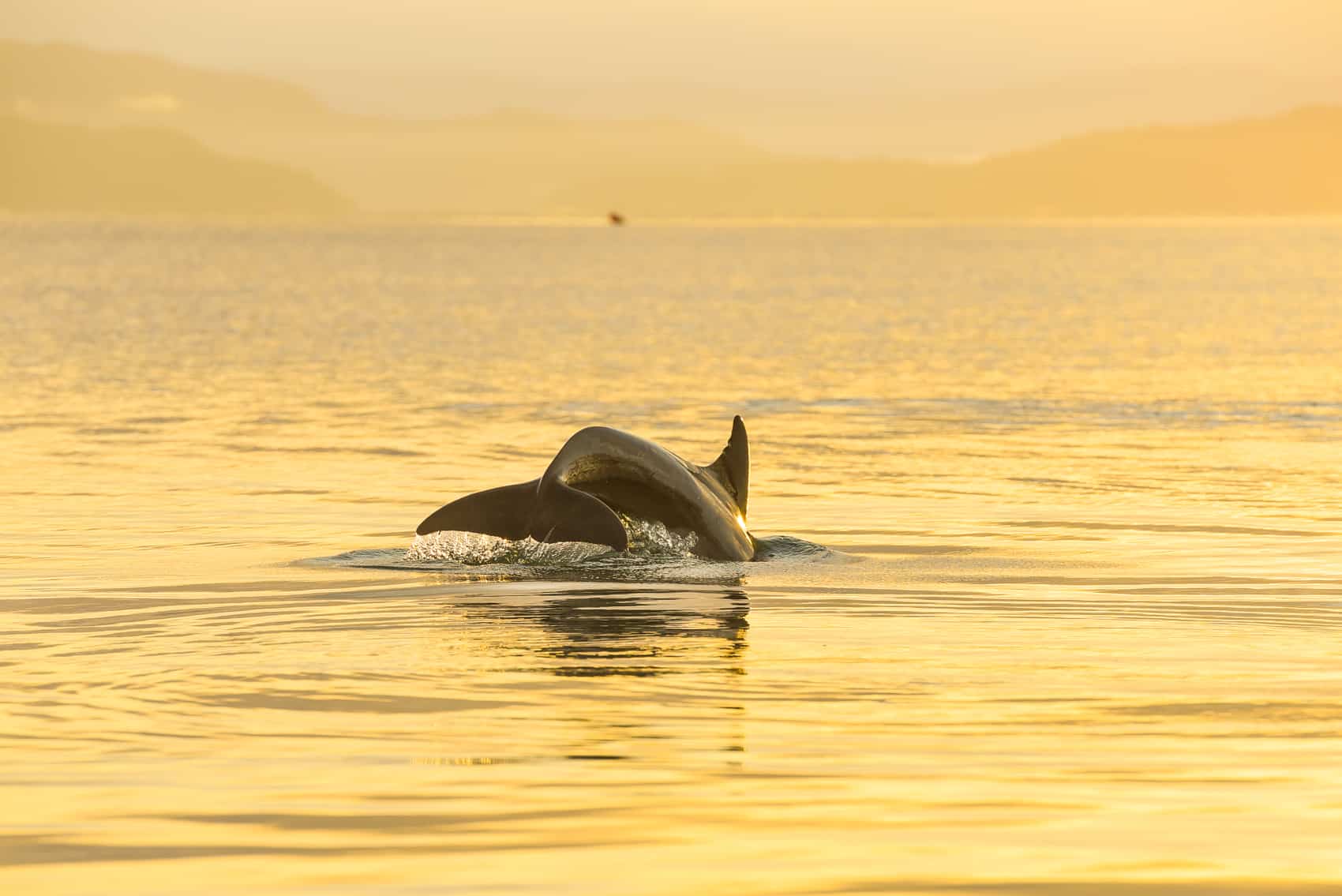It was once a secret that Costa Rica kills heaps of marine mammals for cheap tuna and shrimp, but that fact no longer seems up for debate. Death in a net is the sad reality for way too many dolphins here. Swimming with the dolphins is way more sustainable, fun and educational.
That is not to say that swimming with dolphins is always a good thing. While there are plenty of marine mammals just off the beaches of Gandoca on the south Caribbean and around the islets and beaches of Uvita in the south Pacific, those spots are unfavorable places for people to get in the water. These relatively small cetacean hot spots are special, and shouldn’t be tampered with.
Interspecies sex and communication between bottlenose and Guyana aka Tucuxi dolphins goes on year round off the south Caribbean, and no where else in the world. Here, local captains are known for pulling up near a group, turning off motors, and watching the vigorous action in the relatively small area. The Pacific waters of Uvita hold baby humpback whales needing to drink an absurd amount of milk and learn to survive, while their mothers court and mate with the year’s escorts. Here boats often give the animals distance and respect, knowing that if they come to close, the animals will just be forced to move away from their sweet spot.
But not everywhere is a bad place to swim with dolphins. Anywhere beyond twelve nautical miles from shore, swimmers can even save dolphins from nets. There’s nowhere this happens more frequently than the blue water pelagic ecosystem around twelve miles off the Osa peninsula, in an area larger than Corcovado National Park.
About an hour’s boat ride from the south Pacific’s Drake Bay, tuna boats throw nets around huge pods of dolphins year round. Hardworking crew then jump into the net and muscle most dolphin out alive as the surface hole is clinched ever tighter. This has been happening for decades.
For the past twenty years, when the tuna boats were not netting the Osa dolphins, tourists and guides with local boats from Drake Bay were swimming with them. Sometimes Drake Bay tourists swimming with offshore Osa dolphins keep tuna boats from netting the pod, if only for a little while. The tourists also make heaps of money for Drake Bay hotels and businesses. The tuna nets generate zero for Drake Bay people.
The dolphin swim boats do not interact with the dolphins if the dolphins are not interested. But the tuna fleets hunt down and molest the pod even when the dolphins swim away. The dolphins scream and cry in sounds of panic in the tuna nets. The same dolphins mimic human humming when they choose to play.
Towing from a very slow moving boat while snorkeling or riding underwater scooters seems to work much better than free swimming with the dolphins. In this way, the dolphins will play all day long and even into the night. This adventure sport requires fit people and guides with training and enough crew to watch each person constantly, like any other adventure sport in Costa Rica.
Everyone who has done this over many years agrees that it is one of the greatest experiences. Ever. Offshore Osa is one of the most spectacular human-dolphin embassies on the blue planet. This area is a place to swim with dolphins in a eco-friendly way and show the world how it’s done. We can learn and make lots of money over the long term with these dolphins, or we can continue to unsustainably kill them with no money for local communities.
Spinner dolphins used to patrol the waters of the Golfo Dulce. Not anymore. Now the superpods of offshore Osa appear to be shrinking. Studies show even when you stop killing spinner dolphins, the pods do not return to normal size even after many years.
Now is time to decide if offshore Osa will continue to be a place where the world’s largest resident dolphin pods go extinct for foreign profits.
Or if it is time to empower communities to swim with the dolphins and learn from them, and make lasting local profits.
Costa Rica has that choice.
I think its time to go swimming.






